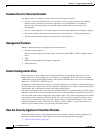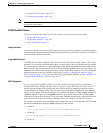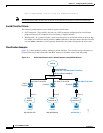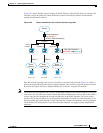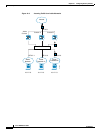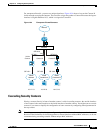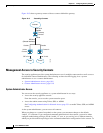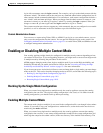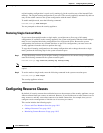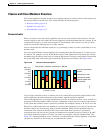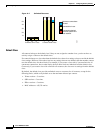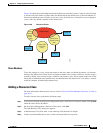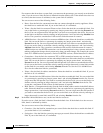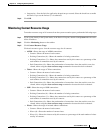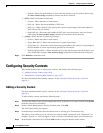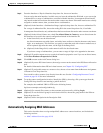
10-10
Cisco ASDM User Guide
OL-16647-01
Chapter 10 Configuring Security Contexts
Configuring Resource Classes
original running configuration is saved as old_running.cfg (in the root directory of the internal Flash
memory). The original startup configuration is not saved. The security appliance automatically adds an
entry for the admin context to the system configuration with the name “admin.”
To enable multiple mode, enter the following command:
hostname(config)# mode multiple
You are prompted to reboot the security appliance.
Restoring Single Context Mode
If you convert from multiple mode to single mode, you might want to first copy a full startup
configuration (if available) to the security appliance; the system configuration inherited from multiple
mode is not a complete functioning configuration for a single mode device. Because the system
configuration does not have any network interfaces as part of its configuration, you must access the
security appliance from the console to perform the copy.
To copy the old running configuration to the startup configuration and to change the mode to single
mode, perform the following steps in the system execution space:
Step 1 To copy the backup version of your original running configuration to the current startup configuration,
enter the following command in the system execution space:
hostname(config)# copy flash:old_running.cfg startup-config
Note Be sure that you do not save the current running configuration, or it will overwrite the one you just
copied.
Step 2 To set the mode to single mode, enter the following command in the system execution space:
hostname(config)# mode single
The security appliance reboots.
Configuring Resource Classes
By default, all security contexts have unlimited access to the resources of the security appliance, except
where maximum limits per context are enforced. However, if you find that one or more contexts use too
many resources, and they cause other contexts to be denied connections, for example, then you can
configure resource management to limit the use of resources per context.
This section includes the following topics:
• Classes and Class Members Overview, page 10-11
• Adding a Resource Class, page 10-13
• Monitoring Context Resource Usage, page 10-15



